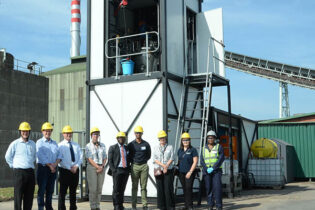By Chetan Mistry, strategy and marketing manager, Xylem
The world once took water for granted. But attitudes are changing as water security becomes a significant risk consideration for companies. In 2015, 70% of companies surveyed for Carbon Disclosure Project’s (CDP’s) Global Water Report were exposed to substantial water risks. In 2019, that figure rose to 75%. Water management takes shapes in many forms. New generations of water meters measure different operations, revealing efficiencies as part of non-revenue strategies such as loss detection. Digital technologies substantially improve consumption reporting: modern leak detection systems are very effective, using innovations such as acoustic waves to pick up leaks in water pipes and prevent more significant issues before they surface. Reusing and recycling water is very effective and affordable – today, it’s best practice to find water recycling in manufacturing, mining and agriculture. Yet every business can start saving significantly without jumping straight into water solutions. They can take a big first step by creating an employee culture that champions responsible water use. Companies can encourage employees to save water in several ways: Lead by example: Visible water saving is an effective way to promote similar attitudes among employees. For example, collect rainwater and grey water, and recycle water when maintaining gardens and washing vehicles. Executives and managers should visibly back water-related projects, attend water project meetings with employees, and treat water as an investment.Encourage water-saving ideas: Employees have an excellent view of practical water-management opportunities that would otherwise go unnoticed, such as dripping taps or leaking pipes. Provide feedback channels – suggestion boxes and email addresses – where employees can send their ideas. Elect water champions who can advocate better water use. Create incentives for employees who report issues such as leaks.
Celebrate employee success: Reward staff for achieving water-saving goals: improve employee facilities or arrange for family days, and acknowledge water-conscious employees with benefits. Creating a visible link between saving water and employee welfare motivates employees to see how water conservation benefits them directly. Collect water usage information: Many companies have little idea how much water they use across their daily operations. Determine the major and minor water uses and use water sensors to report their usage. Reporting is essential for planning and can demonstrate progress to employees, raising their awareness of water pain points. Establish water-saving policies: Employees are often willing to save water, but there isn’t always clarity on how they can contribute while doing their jobs. Sometimes a task will contradict mandates to save water. For example, an employee’s job is to wash fleet cars, but they are expected to do so without water. How would that even work? Developing pragmatic water-saving policies will remove ambiguity. Don’t stop at the office: The best opportunities for better water use are often at employee homes. Children, in particular, can be very insistent and bold about the water problems they see around them. Host workshops on practical actions such as building rain capturing systems or safely recycling household water – perhaps to support a home vegetable garden. Look for fun resources such as children’s books with water themes that they can relate to their families. Water costs are set to rise, and it’s likely that water-usage legislation will start appearing as demand for water grows. Every business will, in the future, rank water as a prime consideration for costs and operational risks. Prevention is better than cure: the CDP’s 2020 Global Water edition reports that companies that don’t mitigate water risks end up with financial impacts five times worse than those that strategically address water supplies to their operations.






